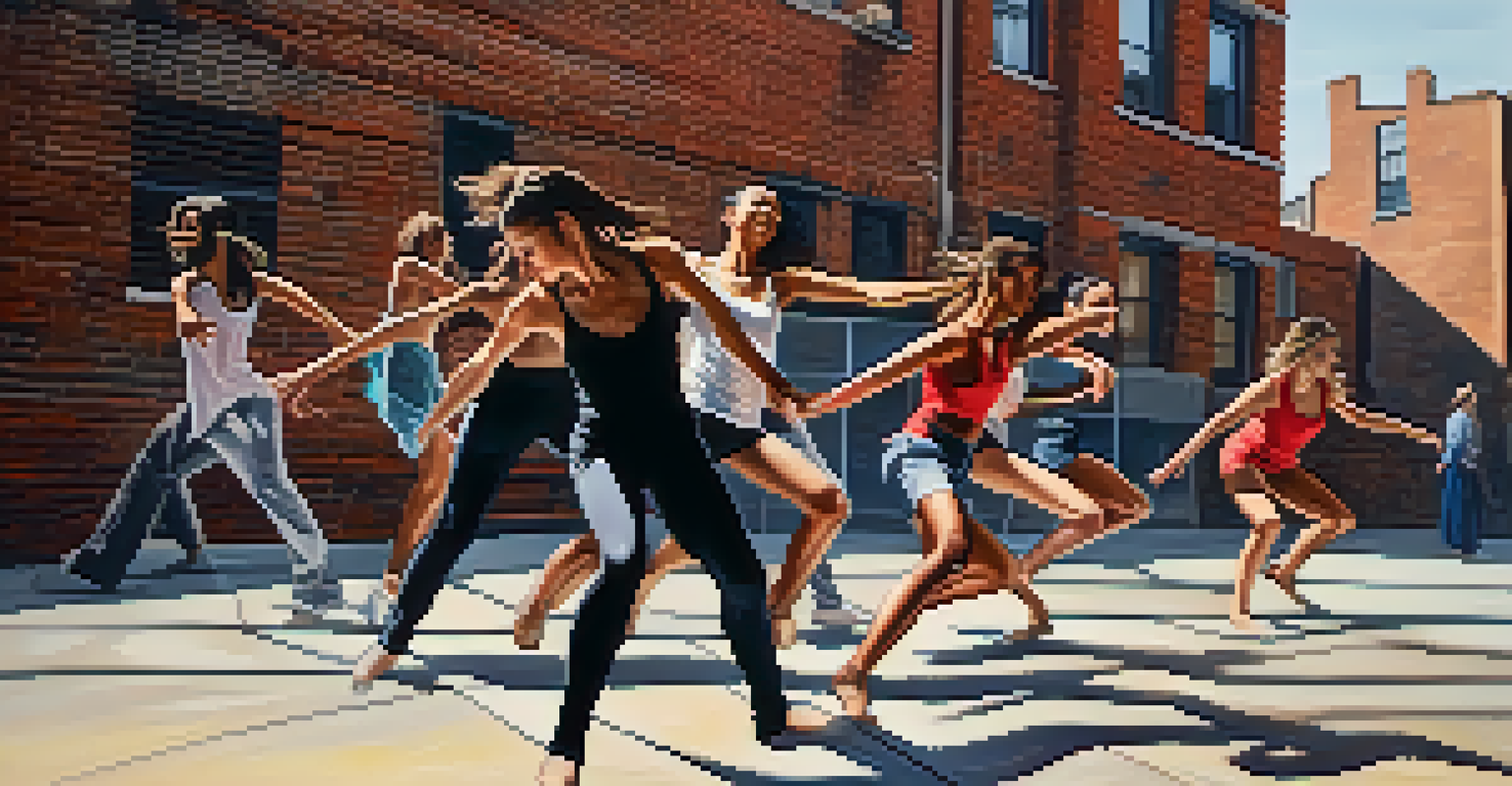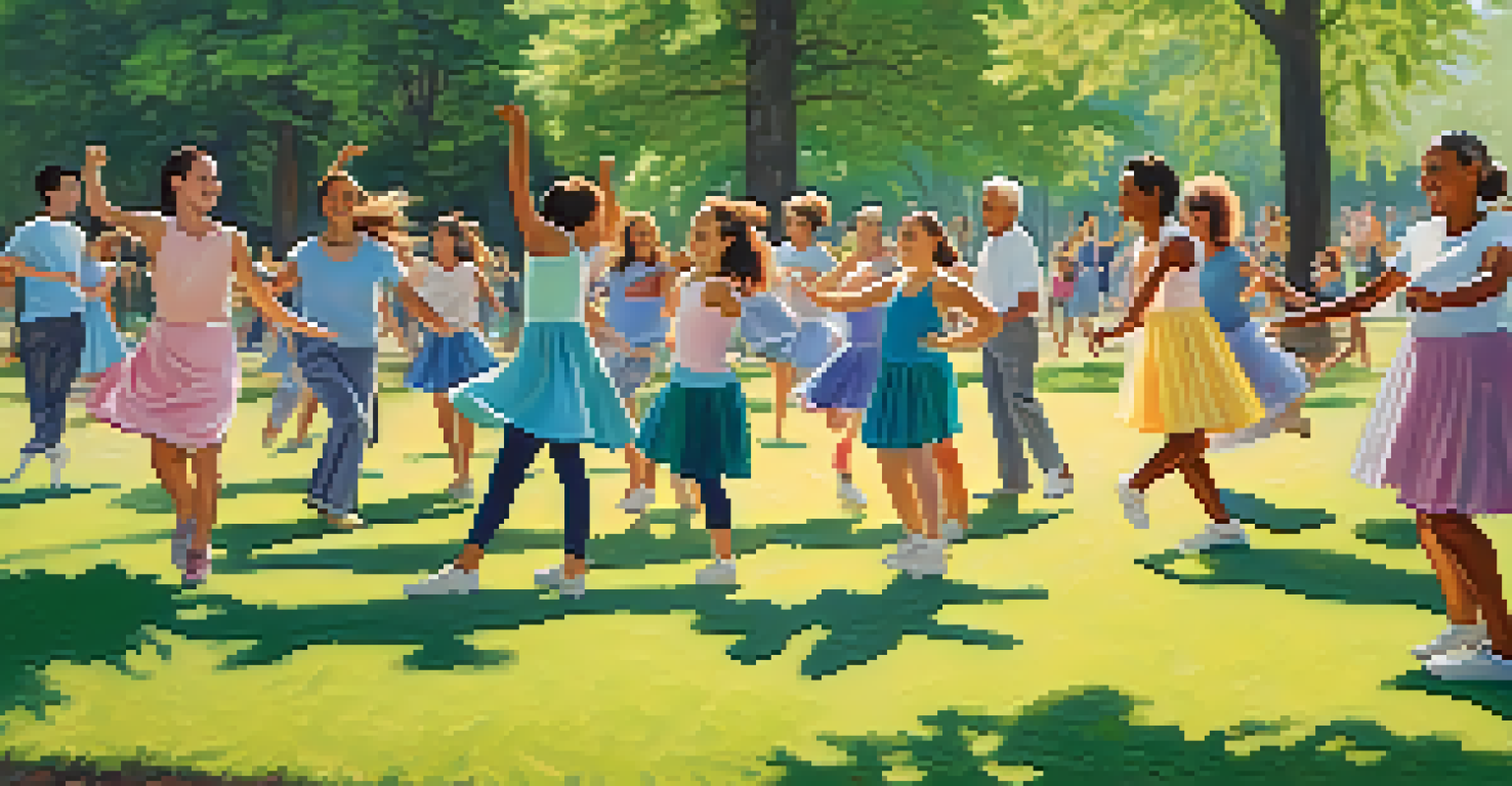Social Dance and Gender: A Mirror of Cultural Expectations

Understanding Social Dance and Its Cultural Significance
Social dance is more than just a fun activity; it’s a reflection of cultural traditions and social norms. From ballroom to salsa, each dance form embodies the values and practices of the community it originates from. The way people engage in dance can reveal much about their societal roles, relationships, and expectations.
Dance is the hidden language of the soul.
At its core, social dance creates a space for interaction, allowing participants to express themselves physically and emotionally. This expression is often influenced by cultural norms that dictate how individuals should behave based on their gender. In essence, social dance serves as a mirror, reflecting the cultural expectations placed upon men and women.
As we delve deeper into the relationship between dance and gender, we’ll uncover how these dynamics have evolved over time, revealing both progress and persistent inequalities. This journey will highlight the interplay between tradition, identity, and the changing landscape of gender roles in society.
Historical Context: Dance as a Gendered Activity
Historically, many social dances have been gendered, with specific roles assigned to men and women. For instance, traditional ballroom dances often position men as leaders and women as followers, reinforcing a dynamic of control and submission. This division not only shapes the dance itself but also reflects broader societal attitudes towards gender roles.

As we look back, we can see how these roles were not just about dance; they were indicative of the expectations society placed on individuals. Men were often expected to be assertive and dominant, while women were encouraged to be graceful and passive. Such patterns in dance routines mirrored the power dynamics prevalent in other areas of life, such as the workplace and family structures.
Dance Reflects Cultural Norms
Social dance serves as a mirror to societal roles, revealing cultural expectations placed on individuals based on gender.
However, historical shifts—such as the women's suffrage movement and changes in labor roles—have gradually influenced how dance is perceived and performed. Over time, more inclusive and egalitarian dance styles have emerged, challenging these traditional roles and opening the floor for a more balanced representation.
Modern Dance Trends: Challenging Gender Norms
In recent years, modern dance trends have begun to challenge traditional gender roles, allowing for greater flexibility in how individuals express themselves. Styles such as hip-hop and contemporary dance often encourage a blend of leadership and followership, regardless of gender. This shift not only empowers dancers but also promotes a sense of equality on the dance floor.
The dance is a poem of which each movement is a word.
Moreover, social media platforms have played a significant role in this transformation. Dancers can share their interpretations and styles with a global audience, breaking down barriers and stereotypes associated with specific gender roles. This democratization of dance allows for a richer variety of expressions, making it more accessible and inclusive.
As more individuals embrace diverse dance forms, they may find themselves redefining their identities and relationships with others. By challenging these norms, dancers contribute to a broader cultural conversation about gender and equality, paving the way for future generations.
Cultural Variations: Dance and Gender Across the Globe
While the Western world often views dance through a binary lens, many cultures offer a more nuanced perspective on gender in dance. For example, in some African and Indigenous cultures, dance is a communal activity that transcends gender boundaries, allowing all participants to express themselves freely. This cultural richness highlights the diversity of beliefs surrounding gender roles in dance.
In contrast, certain cultures may have rigid norms that dictate how men and women should dance, often rooted in historical traditions. Understanding these cultural variations provides a deeper insight into how social dance operates within different contexts, revealing the unique ways gender is expressed and experienced worldwide.
Modern Trends Challenge Gender Roles
Contemporary dance styles are breaking down traditional gender barriers, promoting equality and diverse expressions on the dance floor.
Through cross-cultural exchanges and collaborations, dancers can challenge and expand their understanding of gender roles. This dialogue not only enriches their practice but also fosters a sense of global community, demonstrating that while dance may reflect cultural expectations, it can also serve as a powerful tool for change.
Dance Education: Shaping Perceptions of Gender
Dance education plays a crucial role in shaping the perceptions of gender within the dance community. Instructors often set the tone for gender dynamics in their classes, which can either reinforce or challenge traditional roles. By promoting inclusivity and equal opportunities for all students, educators can create an environment that encourages exploration and self-expression.
Moreover, integrating discussions about gender roles into dance curricula can enhance students' understanding of the cultural implications behind their movements. By examining historical contexts and modern interpretations, dancers can develop a more critical awareness of how gender influences their art form.
Ultimately, fostering an inclusive dance education system prepares the next generation to embrace diversity and challenge stereotypes. As future dancers become more empowered, they will carry these values into their practices, contributing to a more equitable dance landscape.
The Role of Dance in Feminism and Gender Activism
Dance has historically been a powerful medium for feminist expression and gender activism. Many choreographers and performers have used their craft to highlight issues such as body image, consent, and equality, using movement as a form of protest. By bringing attention to these topics, dance can inspire dialogue and provoke change within society.
Through performances and workshops, dancers can create safe spaces for conversations about gender and identity. These platforms allow participants to share their experiences and challenge societal norms, reinforcing the idea that dance is not just an art form, but also a means of advocacy.
Dance as a Tool for Activism
Dance has become a powerful medium for feminist expression, highlighting issues like body image and equality while inspiring societal change.
As the feminist movement continues to evolve, so does the role of dance within it. By integrating activism into their work, dancers can shape the narrative around gender and inspire others to join the conversation, creating a ripple effect that extends beyond the dance community.
Looking Ahead: The Future of Dance and Gender Roles
As societal attitudes towards gender continue to evolve, the landscape of social dance is likely to change as well. We are witnessing a rise in gender-neutral dance forms and an increasing number of mixed-gender partnerships in social dancing. These trends suggest a growing acceptance of diverse expressions of identity and relationships.
The future may hold even more innovative dance styles that prioritize individual expression over traditional gender roles. Dancers are already experimenting with new forms that blend various cultural influences, encouraging a more fluid understanding of gender and movement.

Ultimately, the ongoing dialogue around dance and gender will shape the future of the art form, making it a vibrant space for exploration and change. As individuals continue to challenge norms and redefine their roles, dance will remain a powerful reflection of our evolving cultural landscape.